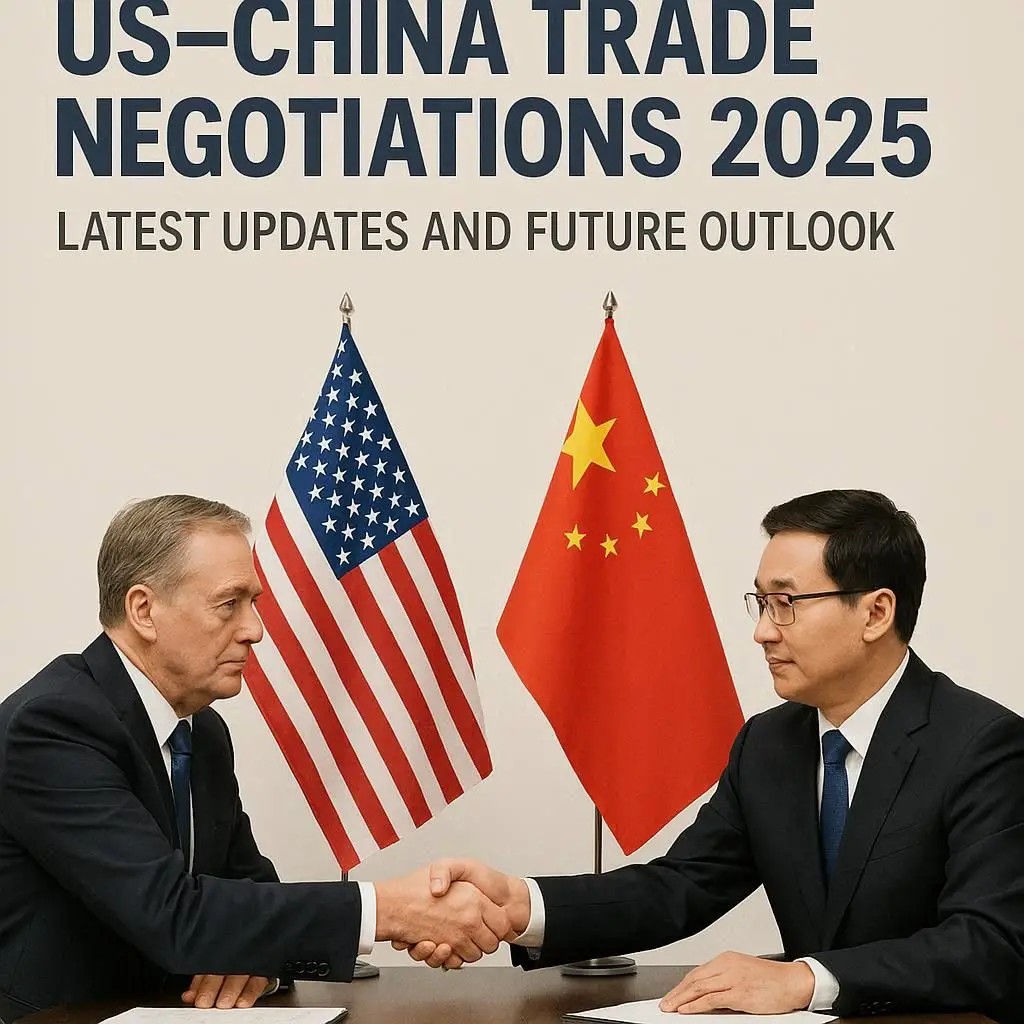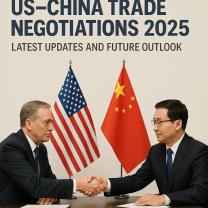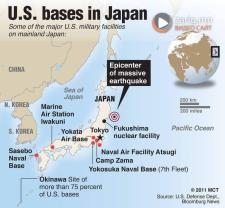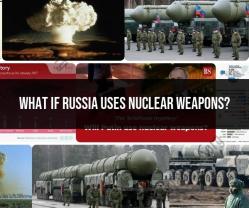The 2025 US–China trade negotiations represent a critical juncture for the two largest economies in the world. These talks are taking place against a backdrop of renewed geopolitical friction, significant tariff escalation, and an increasing focus on national security interests over pure economic efficiency. The outcome will not merely determine the flow of goods between Washington and Beijing; it will have profound, structural impacts on multinational businesses, global supply chains, and international financial markets for the foreseeable future.
The historical context of the US–China trade relationship has been marked by a shift from broad economic integration to targeted conflict. The initial trade war in 2018 saw the imposition of Section 301 tariffs by the US, followed by China’s swift retaliation on US agricultural and industrial goods. While the 2020 Phase One deal offered a brief, tactical de-escalation centered on increased Chinese purchases of US goods and some IP concessions, it failed to address the core structural issues. The recent policy environment in 2025, however, has seen a dramatic re-escalation, with the US reintroducing or significantly hiking tariffs on a broad range of Chinese imports, and China responding with its own retaliatory measures, notably on critical minerals and export controls.
This analysis provides readers with a comprehensive look at the key issues driving the 2025 talks, a timeline of recent policy shifts, the central role of technology and IP, and an assessment of current progress. Finally, we will outline potential scenarios for future economic cooperation, helping businesses anticipate and adapt to the evolving trade landscape.
What Are the Key Issues in the 2025 US–China Trade Talks?
The 2025 negotiations are a battleground covering trade imbalances, industrial policy, and national security, making an agreement significantly harder to achieve than any previous truce.
Central Negotiation Topics
The central issues are fundamental and reflect deeply entrenched economic and strategic interests:
Tariffs and Market Access: The most visible friction point remains reciprocal tariffs. The US, under the new administration, has significantly raised the effective tariff rate on Chinese imports, sometimes into the triple digits, citing China’s "unfair practices" and the need for reciprocity and domestic industrial protection. China views these tariffs as unilateral "long-arm jurisdiction" and is using its own tariffs and export controls—such as those on rare earth metals—as leverage to force broader concessions.
Subsidies and Industrial Policy: The US continues to challenge China’s state-led industrial policy, particularly programs like “Made in China 2025,” which critics argue utilize massive state subsidies to give Chinese companies an unfair advantage in global high-tech markets. This issue of non-market practices is a core structural grievance the US aims to resolve.
Intellectual Property (IP) Protection and Technology Transfer: While China has passed new laws and increased penalties for IP infringement (e.g., through its 2025 Intellectual Property Nation Building Promotion Plan), the US remains skeptical. The core dispute centers on forced technology transfer (often a prerequisite for market access), trade secret theft, and effective legal enforcement for American companies operating in China.
Sectoral Concerns
Specific industries are being used as leverage or are facing disproportionate impact:
Technology and Critical Minerals: This is the most volatile area. China’s move to impose new export controls on rare earth elements—essential for electric vehicles, semiconductors, and defense technology—is a clear attempt to counter US export controls on advanced semiconductors and technology products.
Agriculture and Energy: US agricultural products, particularly soybeans, remain a key target for Chinese retaliation, tying the trade dispute directly to a major US political constituency (Midwest farmers). Energy trade is also subject to political shifts, though market dynamics often exert a stronger influence.
Digital Services and Auto Imports: The US has launched investigations into sectors like shipping, shipbuilding, and solar cells, signaling a willingness to expand tariffs. Simultaneously, the US has expressed deep concern over the influx of low-cost Chinese automotive imports (including EVs) and is examining new port fees on commercial shipping, further broadening the conflict beyond traditional tariffs.
Each of these issues is critical: Tariffs directly impact consumer prices and corporate profitability; subsidies represent a battle for future global industrial dominance; and the conflict over critical minerals and technology is fundamentally a national security competition.
How Have Negotiations Between the US and China Evolved Over Time?
The trajectory of US–China trade talks has shifted from an attempt at normalization (2018 Phase One) to a focus on competitive coexistence (2025 escalation).
Timeline of Trade Talks (2018–2025)
| Date Range | Key Event/Policy Shift | Outcome & Influence on Current Strategy |
| 2018-2019 | Initial Section 301 Tariffs and Retaliation | Full-scale trade war begins. Established tariffs as the primary tool of US trade policy. China's retaliatory focus on agriculture highlights the political vulnerability of US exports. |
| Jan 2020 | Phase One Agreement Signed | Temporary truce. China pledged to increase US purchases; US delayed new tariffs. Failed to address structural issues like subsidies, leading to subsequent tension. |
| 2021-2024 | Tariffs Maintained; Tech Controls Escalated | The Biden administration kept tariffs in place. Focus shifted from tariffs to export controls on advanced technology (e.g., semiconductors), signaling a strategic decoupling in high-tech. |
| Jan-Apr 2025 | Second Trump Term: Tariff Re-escalation | New Tariff Wave: US imposes broad tariffs (up to 10-20% universal, higher on China). China retaliates with duties on US goods and new export controls on critical minerals. |
| May-Sept 2025 | Geneva/Madrid Talks; Temporary Truce Announced | Brief de-escalation in May saw a temporary reduction of the highest reciprocal tariffs to a base rate (e.g., 10%), offering a fragile pause. However, tensions quickly reignited with new retaliatory port fees and increased threats by late September. |
Influence on Current Strategy
Previous negotiations have demonstrated that China will not bow to pressure alone and prefers a strategy of matching US escalation with its own targeted retaliation. The failure of the Phase One deal to resolve structural issues convinced the US that tariffs and export controls are necessary tools to force meaningful change. Consequently, the 2025 strategy on both sides is characterized by leveraging national security tools (export controls, mineral curbs) as bargaining chips, making the current talks primarily political rather than purely commercial.
Domestic pressure and political cycles heavily influence the dynamics. In the US, the populist appeal of protectionist tariffs against China remains strong, limiting the negotiating room for tariff reduction. In China, geopolitical pressure reinforces the official push for economic self-reliance and technological independence.
What Role Do Technology and IP Rights Play in the 2025 Talks?
Technology and Intellectual Property (IP) are not secondary issues; they are the core of the strategic contest between the US and China, driving the most significant policy decisions on both sides.
The Race for Advanced Manufacturing Dominance
Disputes are centered on next-generation technologies crucial for economic and military supremacy:
Semiconductor Access: US controls restrict China's access to high-end chips, manufacturing equipment, and chip design software. China views this as an attempt to stifle its economic development and is accelerating its domestic chip production efforts (e.g., through large-scale subsidies) in response. This dynamic is the purest expression of strategic decoupling.
5G, AI, and Quantum Computing: The US continues to push allies to exclude Chinese telecom equipment, citing national security risks. The development of AI and quantum technologies, which have clear military applications, is being heavily scrutinized, leading to calls for technology transfer control acts in the US to restrict the flow of key IP to China.
Advanced Manufacturing: US concerns about "Made in China 2025" are focused on advanced robotics, aerospace, and electric vehicles, where China’s stated goal is global market dominance.
IP and Technology Transfer as Sticking Points
China has improved its statutory IP framework, but US companies still cite two major sticking points:
Enforcement and Trade Secrets: Difficulties in protecting trade secrets in Chinese courts and a lack of transparency in licensing procedures remain barriers to technology collaboration.
Technology Acquisition: The US views China's aggressive strategy of acquiring US technology through foreign direct investment, joint ventures, and cyber-theft as a national security threat.
To address this, proposals in the US include expanding the scope of export controls on "national interest technology," increasing scrutiny of outbound US investment into sensitive Chinese tech sectors, and using sanctions on foreign persons who violate these controls. China counters with its own Unreliable Entities List and export controls on strategic materials, creating a tit-for-tat framework where technology has become a weapon in the trade war.
Are There Signs of Progress or Stalemate in Trade Negotiations?
As of late 2025, the overall picture points toward a continued state of friction with periodic, temporary tactical de-escalations.
Recent Developments
Temporary Tariff Truce (May 2025): The agreement to temporarily roll back the most extreme reciprocal tariffs was a brief positive signal, preventing a complete collapse and offering modest relief to markets. J.P. Morgan Research, for example, raised China's full-year growth forecast slightly based on the assumption this temporary relief would hold.
Renewed Escalation (Late 2025): This optimism was quickly shattered. The US threatened 100% tariffs in response to China’s aggressive new rare earth export controls, demonstrating that the underlying mistrust and willingness to use extreme leverage remain paramount. The cancellation or postponement of scheduled high-level meetings has also signaled an ongoing impasse.
New Barriers: The introduction of new non-tariff barriers, such as the US hiking port fees and China matching those fees, shows the conflict is broadening into new economic sectors previously insulated from the trade war.
Momentum vs. Impasse
Negotiations show a consistent impasse on structural issues. China is unlikely to dismantle its state-led industrial policy or abandon its push for technological self-sufficiency. The US is unlikely to lift the majority of its tariffs or technology controls without major, verified structural concessions.
Signs of Openings: Managed trade for certain goods (e.g., US energy/agriculture sales to China) might offer small openings if China needs to stabilize commodity prices. Diplomatic channels also remain nominally open, preventing an outright diplomatic rupture.
Continued Friction: Friction continues in high-tech (semiconductors, AI), autos, and any sector touching critical minerals. The immediate threat of further US tariff hikes on electronics and pharmaceuticals by 2026 also weighs heavily on the outlook.
What Is the Predicted Outlook for US–China Economic Cooperation?
The future of US–China economic cooperation is best understood through scenario analysis, as a decisive, comprehensive deal remains highly unlikely.
Scenario Analysis for US–China Economic Cooperation
| Scenario | Core Elements | Implications for Global Businesses & Supply Chains |
| Optimistic: Tactical Stability (Low Probability) | Phased tariff reductions (e.g., back to 2024 levels); China commits to verifiable IP enforcement; a managed trade agreement on select purchases (e.g., LNG, agriculture). | Minor relief on costs. Businesses slow down "China+1" diversification but maintain dual supply chains. Investor confidence modestly improves. Tariffs remain a permanent cost of doing business. |
| Moderate: Prolonged Tensions (High Probability) | Continuation of current high tariffs (15-30% effective rate) with periodic, temporary truces; escalation remains confined to specific, non-critical sectors; tech decoupling proceeds via export controls but without full blockade. | "China+1" becomes permanent. Businesses commit capital to diversifying production to Vietnam, Mexico, and India (nearshoring/friend-shoring). Global supply chains are structurally bifurcated (US-aligned vs. China-aligned). Higher long-term costs due to redundancy. |
| Pessimistic: Full Decoupling (Medium Probability) | US imposes tariffs exceeding 50% on all Chinese goods; China imposes comprehensive export controls on all critical minerals; full severance of financial and data ties; major conflict over Taiwan or South China Sea. | Global recession risk increases. Forced, rapid reshoring or regionalization. Massive write-downs of assets in China for multinational corporations (MNCs). Full separation of tech ecosystems, creating two distinct global standards. |
Indicators to Watch
Businesses should monitor the following for early signs of progress or escalation:
Official Rhetoric: Any shift from "strategic competitor" to "partner" in high-level US statements.
Rare Earth Export Data: A significant, sustained easing of China’s rare earth export restrictions would signal a willingness to de-escalate.
Sanctions and Entity Lists: The rate at which the US adds Chinese companies to the Entity List (export control list) and the extent of China's retaliation (e.g., adding US firms to the Unreliable Entities List).
Tariff Rates: Whether the effective US tariff rate stabilizes near 20% or continues its climb towards 50%+.
FAQ Section
What industries benefit the most if trade negotiations succeed?
If negotiations succeed in lowering tariffs and ensuring stable market access, the biggest beneficiaries would be:
US Agricultural Exporters: Soybeans, pork, and beef.
Chinese Producers of Low-Margin Goods: Apparel, basic electronics, and furniture, which are highly sensitive to tariff costs.
Global Logistics and Shipping: Reduced port fees and tariffs stabilize and increase trade volumes.
How do tariffs affect small businesses vs. multinational corporations?
Small Businesses (SMBs) generally feel the impact faster and more severely, as they lack the capital and infrastructure to quickly move production out of China. They are often forced to absorb higher costs or pass them directly to consumers, reducing their competitiveness. Multinational Corporations (MNCs), while facing higher costs, have the resources to implement long-term "China+1" diversification strategies (e.g., shifting production to Vietnam, Mexico), allowing them to structurally mitigate tariff risk over time.
Are technology and IP rights negotiable in these talks?
Yes, but only the enforcement mechanisms are truly negotiable. The US will not compromise on its strategy of controlling access to critical and sensitive technology (like advanced semiconductors). China may agree to clearer IP licensing, faster court processes, and stricter penalties, but it will never concede on its strategic goal of technological self-sufficiency via its industrial policy.
What are the likely next steps if talks stall?
If the current talks stall, the likely next steps will be further tariff hikes on previously exempt sectors (e.g., US adding tariffs on pharmaceuticals or electronics) and expanded use of non-tariff barriers (like the new port fees, regulatory hurdles, or further tightening of export controls on both sides). This would entrench the current scenario of prolonged, high-level tension.
How quickly could agreements be implemented after a deal is reached?
Tariff reductions can be implemented relatively quickly (within weeks to a month) by simple executive order or proclamation. However, structural agreements concerning IP enforcement, anti-subsidy provisions, and technology transfer require significant legislative or regulatory changes in China, which could take six months to over a year to be fully enacted and verified.
Conclusion
The 2025 US–China trade negotiations are defined by an enduring conflict over tariffs, industrial subsidies, and technological supremacy. While brief, temporary truces offer moments of relief, the core issues—particularly the role of technology and IP rights—signal a strategic competition that transcends simple commerce. The current environment is characterized by signs of stalemate, with both sides using tariffs and export controls as powerful, reciprocal bargaining chips.
The predicted outlook points strongly toward a moderate scenario of prolonged tensions. Global businesses must recognize that the era of frictionless US–China trade is over. Monitoring developments in critical minerals, high-tech export controls, and effective tariff rates is paramount. Adapting business strategies through robust China+1 diversification and building resilient, regional supply chains are no longer strategic choices but are essential requirements for companies operating in this fundamentally restructured global economy.






Geo_Strategist
on October 13, 2025The key takeaway for 2025 is that the trade relationship has completely been securitized. Tariffs on goods are merely the visible symptom of a deeper, ongoing **Tech War** centered on **IP rights** and **semiconductor** dominance.
Political_Analyst
on October 13, 2025The recurring cycles of **tariff crossfire** followed by high-level meetings that yield only temporary rollbacks (e.g., to **10% baseline**) perfectly defines the current **Stalemate** – neither side can afford to lose face or fully decouple.
Digital_Services_EU
on October 13, 2025The expansion of the conflict into digital services and shipping shows no sector is safe. Non-tariff barriers are the new battlefront now that the easy tariff increases have been exhausted.
AgriTradeExpert
on October 13, 2025As long as tariffs remain, agriculture will be a pawn. The US can’t secure long-term purchase commitments when the trade relationship is this strategically unstable. Soybean farmers bear the cost.